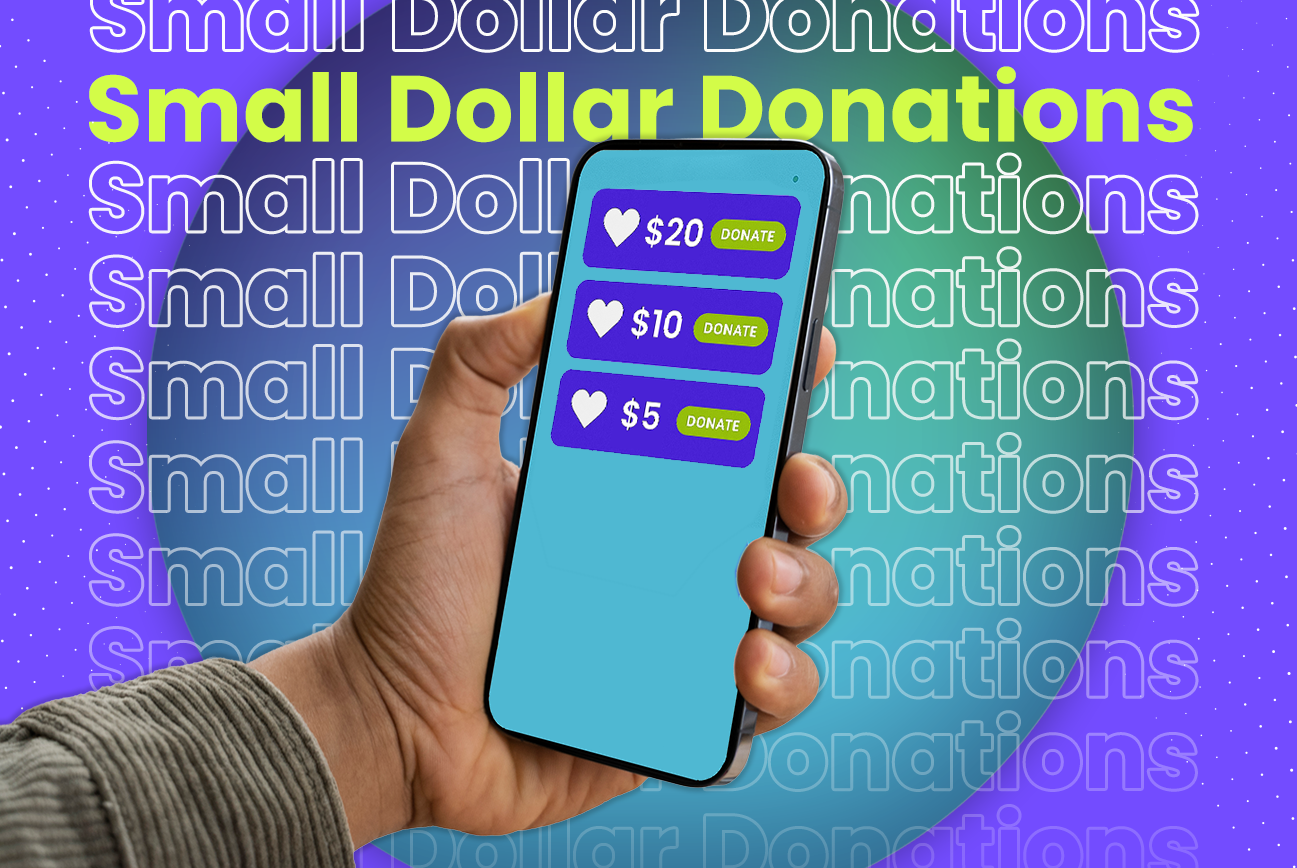You’ve got a million things going on. You’re finalizing your year-end appeal, juggling internal deadlines, and maybe even preparing last-minute GivingTuesday emails. So, when you see a small dollar donation come in from a new donor, it’s understandable if it doesn’t feel like a big deal.
But it is!
Small dollar donations of $5, $10, or $20 can play a huge role in growing your donor base, especially during the stretch between GivingTuesday and December 31. These donations often come in fast, from first-time donors who were inspired by a social post, a quick email, or a friend’s recommendation.
And even though these gifts may not seem like much in the moment, they can be the start of a long and meaningful relationship.
But you need to respond the right way.
A small dollar donation is often a test.
For many new donors, especially on GivingTuesday, a $5 or $20 gift is a low-commitment way to familiarize themselves with your organization. In fact, they’re often asking, “Is this an organization I can trust with more of my support?”
And the number of donations under $100 has been steadily declining, down more around 10.4 percent so far in 2025, according to the Fundraising Effectiveness Project.
That means every small dollar donation you acquire this season is more valuable than ever.
So, when a new donor makes a small dollar donation, your job is to make sure it doesn’t go unnoticed. There’s a much better chance they’ll still be with you next year and give even more if you treat that donor like they matter now.
LEARN MORE: Let’s freshen up your online donation page.

Every gift makes a difference.
This time of year, you’re likely working toward some big fundraising goals. But if a donor only has a few dollars to give, they might wonder whether their contribution actually makes a difference.
It’s your job to make their impact clear.
So, think about how you can create smaller, more tangible asks instead of lumping all your small dollar donors into a giant year-end appeal. For example, if you’re raising money to fund holiday care packages, a message like “just $10 helps us send one care kit to a local family” resonates a lot more than “help us hit our $50,000 goal.”
That kind of framing helps donors see their place in the bigger picture and makes it easier for them to say yes.
LEARN MORE: Donors need to know the impact of every donation.

Make it easy to give.
Most small dollar donations happen quickly. A supporter sees your message, clicks the link, and decides in the moment whether to give.
So, go to your donation page and make a small $5 test donation. Does your donation page load smoothly on a mobile device? Is the donation amount pre-selected? Are there any unnecessary steps that might cause someone to leave?
You don’t need to overhaul everything. Just focus on making it easy for someone to get their foot in the door.
LEARN MORE: Is it easy to give to your nonprofit?
Now’s the time to introduce monthly giving.
When someone gives $10 on GivingTuesday or through your year-end campaign, they’ve already shown they’re willing to support you. So why not ask them to keep it going?
You don’t have to push too hard. A simple follow-up a few days later, like, “You made a difference this December. Can we count on you to make a monthly impact?” can plant the seed for a recurring gift.
And that’s how small dollar donors often become your most loyal supporters.
Monthly givers are more likely to stick around and contribute more over time, even if each gift is modest.
LEARN MORE: How monthly giving can elevate your fundraising.

Don’t forget to follow up.
This part might seem obvious, but it’s easy to skip when you’re short on time. You need to thank someone after every donation, no matter how much they give. And not just with a receipt or automated email. You need a thoughtful message that makes them feel seen and valued.
That $5 gift might be a one-time thing, or it might be the beginning of a much bigger journey. You never really know unless you stay connected.
So, reach out to say thank you and invite small dollar donors to learn more. Ask them why they gave and show them they’re part of something that matters.
Because the truth is, when a small dollar donor feels valued, they’re far more likely to come back and could even bring others with them.
LEARN MORE: Does your nonprofit need to send better thank you’s?
Small donations. Big potential.
We’re not talking about large organization-changing gifts. But you need to pay attention when small dollar donors show up, especially in these final weeks of the year.
So, don’t just focus on the big checks that come in during GivingTuesday and the year-end push. Those $10 gifts could turn into monthly support, peer-to-peer fundraisers, or future major donors. But only if you follow up with care and intention.
Looking to make the most out of small dollar donations? Click here to chat with our team!









